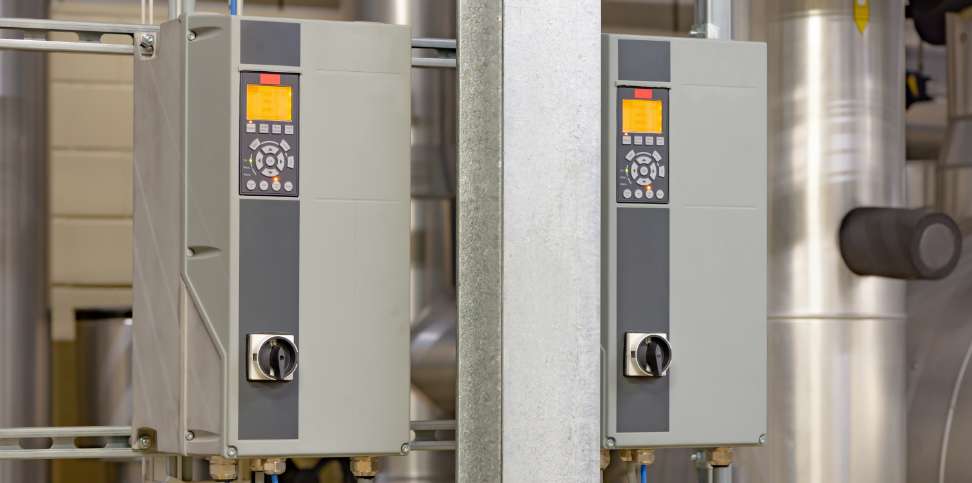Successfully Added
The product is added to your quote.

In the cutthroat arena of today's industrial world, achieving the pinnacle of energy efficiency, precise motor control, and operational excellence is the ultimate aspiration for businesses across the spectrum. With the help of technological advancements, a game-changing solution appeared - Variable Frequency Drives (VFDs). These electronic marvels are revolutionizing how industries handle and manage electric motors.
This comprehensive guide plunges into the fascinating realm of VFDs, clarifying what they are, their modus operandi, broad-ranging applications, and the plethora of advantages they confer in industrial arenas. By unearthing the nuances of these devices, we aim to equip you with an in-depth understanding of their instrumental role in fueling efficiency, paring down energy consumption, and fine-tuning processes in our dynamic industrial ecosystem.

VFD, an acronym for Variable Frequency Drive, is alternatively known as adjustable frequency drives or inverters. These digital wonders are engineered to govern the speed and torque of electric motors by modulating the frequency of the power they receive.
Differentiating themselves from single-phase motors, VFDs are equipped with adjustable speed and torque controls, empowering their utilization across a diverse range of applications. In contrast to single-phase motors' fixed speeds, variable frequency drives command an extensive spectrum of operating speeds thanks to their adjustable frequency controls. Here are some alternative names for a VFD:
At their heart, VFDs morph fixed-frequency AC power from the electrical grid into variable frequency and voltage output. This transition is accomplished through a fusion of sophisticated components and control systems.
Firstly, the incoming AC power is morphed into DC power through a rectifier. The DC power then finds a home in a DC bus, functioning as an intermediary energy storage unit. Lastly, the inverter transmutes the DC power back into AC power with the desired frequency and voltage.
The control system is instrumental in regulating the output frequency and voltage, guided by user-defined parameters and sensor feedback. An array of control methods, like scalar control, V/f control, sensorless vector control, and flux vector control, can be harnessed. These methodologies offer different levels of motor performance, speed accuracy, and torque control, tailored to specific application needs.
Variable Frequency Drives have found extensive utilization in industrial environments due to their remarkable adaptability and ability to refine motor control. They grant precise authority over motor speed, empowering operators to modify it to align with particular process requirements. VFDs allow smooth and efficient motor acceleration and deceleration, significantly reducing mechanical strain and prolonging equipment life.
They also provide a "soft start" capability, gradually increasing motor speed, minimizing power surges, and extending the motor's and associated equipment's lifespan.
VFDs have made their mark from controlling machinery and equipment like pumps, fans, compressors, conveyors, and mixers to regulating fan speeds and compressor operation in HVAC systems. These resourceful devices are vital in many industries, including:

Harnessing the power of Variable Frequency Drives offers many benefits in an industrial setting. Let's uncover the key advantages VFDs bring to your business:
VFDs minimize the energy wastage associated with fixed-speed motor operations by tailoring the motor speed to the required demand. This translates into significant energy savings and a noticeable reduction in electricity costs - a win for your bottom line and the environment.
By offering precision over motor speed, acceleration, and deceleration, VFDs help you match the motor's performance to your specific needs. The result? Improved process efficiency, reduced wear on equipment, and enhanced product quality.
By providing 'soft start' and 'soft stop' capabilities, VFDs reduce mechanical stress on the motor and connected equipment, reducing maintenance costs and improving overall reliability.
VFDs' adjustable speeds and torque control are invaluable in applications with varying load demands. This ensures smooth operation and minimizes the risk of equipment damage.
The stress-free control of motor speeds extends the lifespan of motors, belts, bearings, and other connected equipment, contributing to cost-saving and an efficient production line.
VFDs allow operators to fine-tune motor-driven processes. This enhanced control leads to improved productivity and reduced production waste.
VFDs' ability to control motor speed and torque reduces maintenance repair costs and downtime and improves operational efficiency.
Certain VFDs are equipped with harmonic filters, mitigating the harmonic distortion caused by non-linear loads. This helps maintain power quality, prevents equipment malfunctions, and ensures compliance with electrical standards.
VFDs’ energy-saving capabilities contribute to reduced greenhouse gas emissions, promoting sustainable and eco-friendly operations.

At Industrial Automation Co., we supply an extensive range of top-tier VFDs and other industrial replacement parts from the leading manufacturers in the industry. Whether you want to upgrade your existing AC drives or replace faulty components, we offer solutions that enhance motor control, boost energy efficiency, and maximize your industrial processes. Check out our parts catalog and get a quote for your automation components today!
With the proper guidance and equipment, you're just one step away from making your industrial operations more intelligent, efficient, and sustainable. Choose VFDs - choose efficiency. Start your journey with us today.


